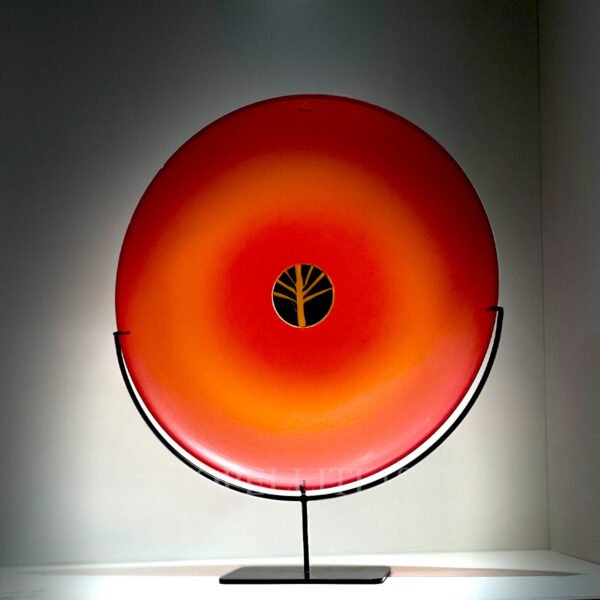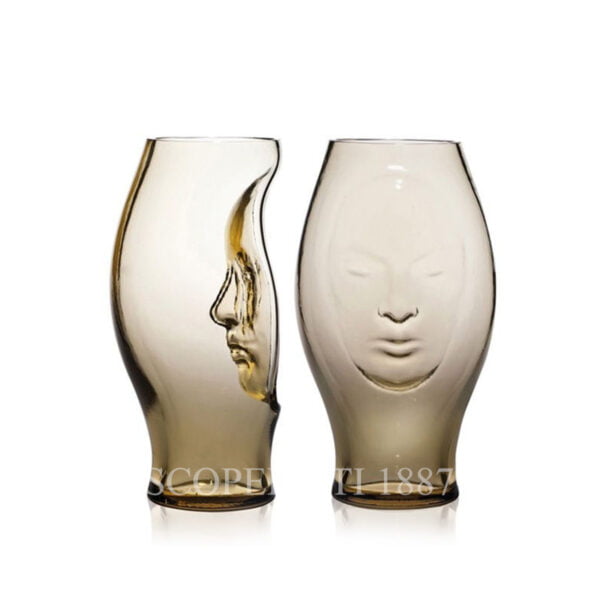The Venini Kukinto vase, designed by Sarpaneva in 1991, is a stunning example of Sarpaneva design. Hand-blown by master glassmakers, the vase features a straight body and funnel-shaped neck in striking black, red, apple green, sapphire, and clear glass. The multi-colored design resembles the petals of a northern flower, gently waving in the air. The word “Kukinto” is Finnish for fluorescence, and the vase’s vibrant colors evoke the beauty of blooming flowers. It’s a perfect piece for home décor, whether as a striking container or a bold statement for any room.
“With grace and harmony, the Kukinto vase seems to float in the air, coming to life and shifting in color. It transitions from rich red to apple green, sapphire blue, and ends with elegant shades of black. Made of sheer glass layered on sheer glass, it’s as delicate as petals and light as a ballerina’s tutu.”
Vase details
- Brand: Venini
- Model: Kukinto
- Material: Murano Glass mouth blown
- Color: CRYSTAL, SAPPHIRE, APPLE GREEN, RED, BLACK
- Diameter: 46 cm / 18,11″
- Height: 40 cm / 15,74″
- Packaging: Gift-wrapped
- Design: 1991 by Timo Sarpaneva
- Technique: Fasce, Soffiato
- Signed at base.
- Wipe clean with soft dry cloth.
- Made in Italy
About Timo Sarpaneva
Timo Sarpaneva (1926–2006) was a leading figure in Finnish design. Since the end of World War II, Finland gained a reputation as a hub for design, and Sarpaneva was central to that movement. A designer, sculptor, and educator, he came from a long line of Finnish blacksmiths and worked with materials like metal, wood, textiles, ceramics, and porcelain. His passion was combining form and function, creating designs that were both artistic and practical. Although he trained as a graphic designer, Sarpaneva’s work focused primarily on industrial design, particularly pioneering glass that blended art with everyday use.
His work earned global recognition, including the Lunning Prize and two awards at the Milan Triennale. In 1976, the Finnish government honored him with the title of Professor. His designs are displayed in prestigious museums worldwide, such as the Museum of Modern Art (MoMA) and the Metropolitan Museum in New York, as well as the Corning Museum of Glass. He began collaborating with the Italian glass company Venini in 1988.
Sarpaneva viewed glass as a mysterious material, constantly changing in both form and texture. The process of shaping molten glass, using flame, tools, and heavy iron scissors, is delicate and brief — there’s only a small window of time to shape the glass before it solidifies. After years of working with this constraint, Sarpaneva became drawn to working with glass that had already set.























